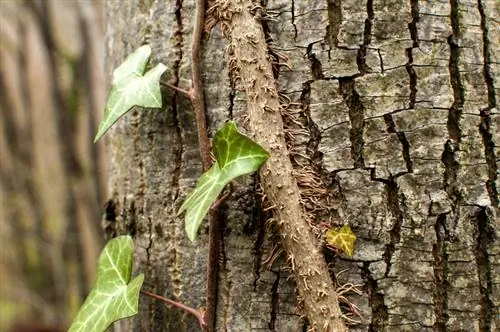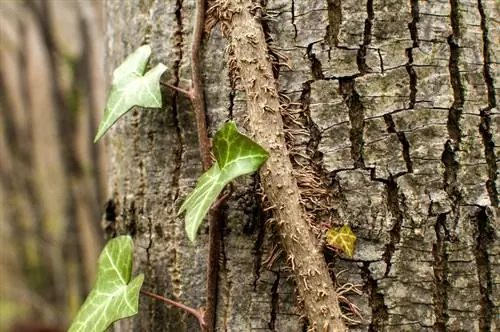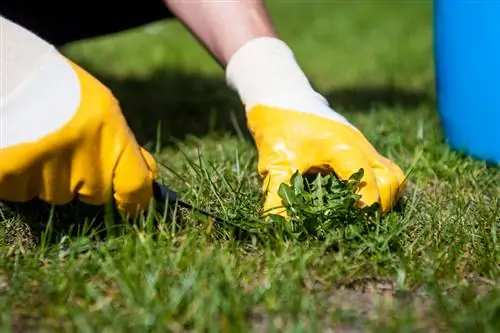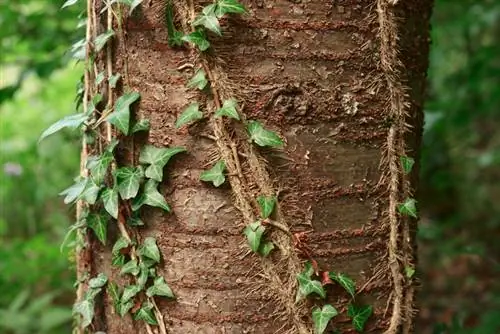- Author admin [email protected].
- Public 2023-12-16 16:46.
- Last modified 2025-01-23 11:20.
Ivy is only able to grow up to 20 meters high because of its adhesive roots. He uses them to cling up to walls, walls and trees. If ivy is removed from a wall or wall, the roots leave visible traces that must be removed by hand.

Why does ivy need adhesive roots?
Adhesive roots of the ivy serve as suction devices for the climbing plant to climb up walls, walls and trees. They are necessary for the growth of the ivy and fix the shoot on suitable substrates.
What are the roots of ivy used for?
Ivy develops two different types of roots. The main root supplies the climbing plant with nutrients and water. It penetrates the soil, but can also continue to grow in joints and cracks in walls. Main roots always arise where the ivy tendril rests on a favorable surface.
The adhesive roots, on the other hand, are suction devices arranged in a ball shape. If the tendril is on a suitable surface, adhesive roots will initially form to hold the shoot in place.
There is no such thing as ivy without roots. The roots of Hedera helix, common ivy, are particularly strong, while those of Irish ivy and Caucasian ivy are less pronounced.
Varieties for facade greening
The adhesive roots are a big problem when planting facades with ivy because they later leave behind residue when they are removed. When the tendrils are torn off, the suction cups remain underground and have to be laboriously removed.
If you want to add greenery to a facade or wall, you should give preference to Irish ivy. Caucasian ivy, on the other hand, is not suitable because the roots are too weak and there is a risk that the ivy will simply fall down after a heavy storm.
Removing adhesive roots from house walls
If you want to remove ivy from walls and walls, first tear off the vines from top to bottom. You have to be very careful so that you don't damage the masonry.
To remove the residue from the adhesive roots, you can use the following tools:
- Wire brush
- Sandpaper
- Spatula
- Triangle grinder
- Sandblasting machine
Sandblasting devices should only be used if the masonry is very strong. Otherwise you will have to re-plaster the house later.
Tip
In contrast to the supply roots, the adherent roots of ivy are not responsible for structural damage. Only the supply roots can spread so much into cracks in walls and joints that they burst the masonry.






